Red light therapy is a quick, non-invasive way to help reverse gum disease. By using red and near-infrared light, it stimulates your cells to produce more energy, which enhances healing and reduces inflammation. You'll find that regular sessions can improve blood flow, boost collagen production, and support tissue regeneration in your gums. Most treatments take just 10-20 minutes, and doing this 3-5 times a week can lead to noticeable improvements. If you're curious about specific devices or how to integrate this therapy into your routine, you'll discover more useful information ahead.
Mechanism of Red Light Therapy
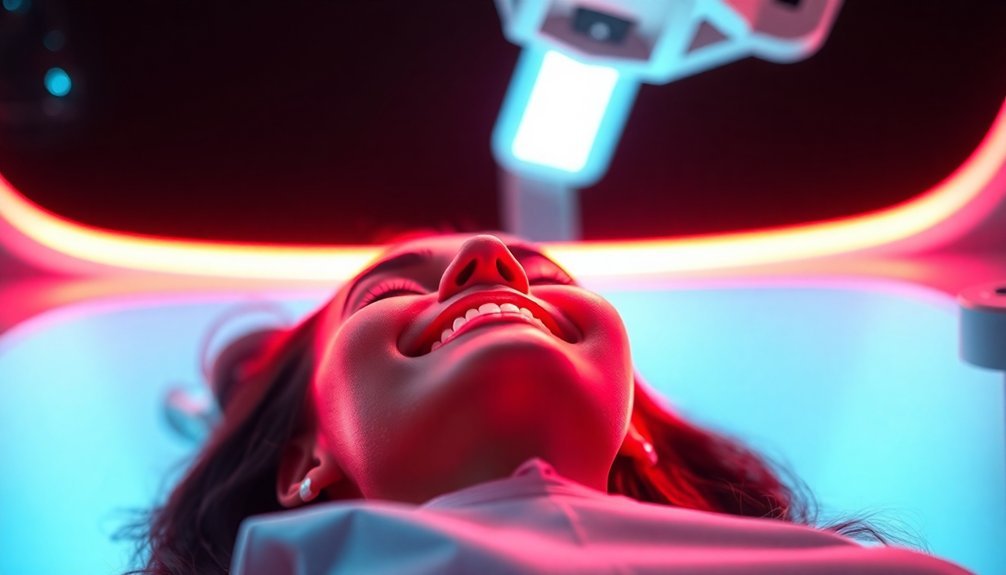
When it comes to understanding the mechanism of red light therapy, it's all about how this specific light interacts with your body at the cellular level. When red and near-infrared light penetrates your skin, it primarily targets mitochondria, the powerhouse of your cells. This interaction stimulates a protein called cytochrome c oxidase (CCO), considerably increasing adenosine triphosphate (ATP) production.
As a result, your cellular energy boosts, enhancing overall cellular function and efficiency. Moreover, improved ATP synthesis doesn't just fuel energy; it influences cell signaling and gene expression. This means your body begins generating signaling molecules that modulate levels of cytokines, growth factors, and inflammatory mediators. In turn, this fosters enhanced cell proliferation and migration, essential for wound healing.
You'll also benefit from improved blood flow and circulation. Enhanced circulation forms new capillaries, delivering more oxygen and nutrients to your cells. This supports the lymphatic system and boosts circulation in specific tissues, which can be particularly advantageous for gum health.
Benefits for Gum Health
Red light therapy offers remarkable benefits for gum health, delivering powerful support as you navigate various dental issues. One of its key advantages is the reduction of inflammation and pain associated with conditions like gingivitis and periodontitis. By modulating the inflammatory response, this non-invasive method provides relief from discomfort without the need for medication.
Additionally, red light therapy accelerates healing and tissue regeneration. It stimulates cellular repair mechanisms, enhancing the recovery of oral tissues and promoting cell regrowth, especially in receding gums. Improved blood circulation in the gums further supports this tissue regeneration, allowing for faster healing. Furthermore, it enhances bone regeneration**, which is crucial for supporting overall gum health.
You'll also find that red light therapy can prevent and manage gum recession effectively. By promoting gum tissue regeneration and increasing collagen production, it helps halt the progression of gum recession. This daily, non-invasive treatment improves your overall oral health.
Finally, red light therapy serves as a complementary treatment for various dental conditions. Whether it's chronic gingivitis or oral ulcerations, it boosts outcomes when combined with standard dental procedures, enhancing your oral health journey and providing extensive support.
Effectiveness in Periodontal Care
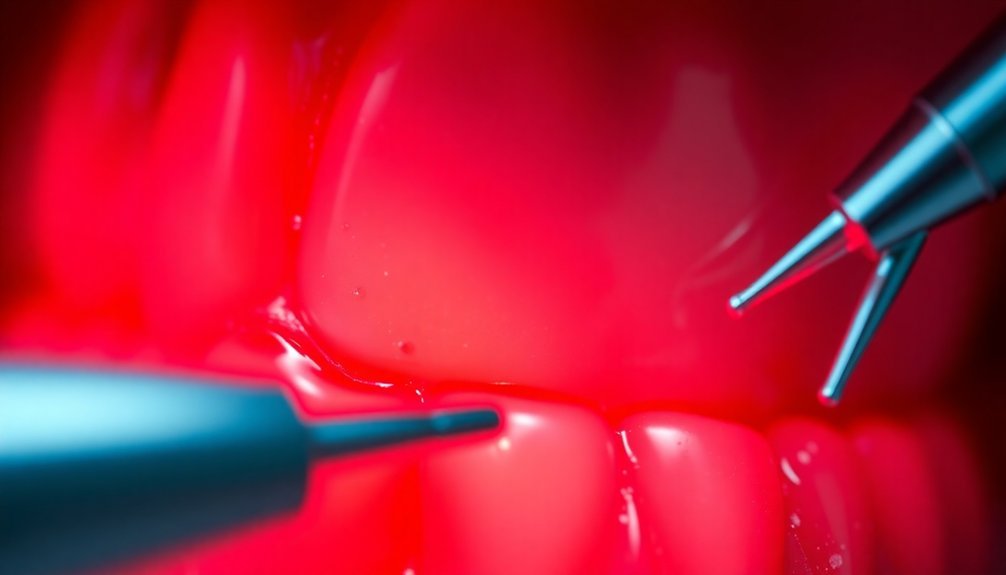
When it comes to periodontal care, you've got options that work well for both non-surgical procedures and surgical interventions. Red light therapy can boost the effectiveness of traditional treatments, helping you achieve better outcomes. This therapy promotes tissue regeneration by delivering specific light wavelengths that enhance cellular energy.
Non-Surgical Procedure Benefits
Non-surgical procedures offer considerable benefits in the management of gum disease, enhancing both treatment effectiveness and patient comfort.
One of the most effective methods is scaling and root planing. This deep cleaning technique targets areas below the gum line, promoting gum health by smoothing tooth roots, helping your gums re-adhere to teeth. By reducing inflammation, it prevents the further progression of gum disease, although multiple sessions may be necessary for ideal results over a four-week period.
Antibiotic and antimicrobial therapies also play an essential role. Specialized periodontal antibiotics can be placed deep in gum pockets to directly tackle bacterial infections, while systemic antimicrobials help eliminate harmful bacteria effectively. Treatments such as systemic sub-antimicrobial dose doxycycline kickstart the healing process in moderate-to-severe cases.
Laser therapy, particularly LANAP, is a near-painless alternative that cleans infected surfaces and reduces pockets between teeth and gums, promoting new growth. When combined with other non-surgical methods, it greatly improves clinical outcomes.
Finally, red light therapy can enhance healing during hygiene appointments, decreasing inflammation and enhancing the effects of other treatments, reaffirming its role in modern periodontal care.
Surgical Intervention Support
Surgical interventions play a significant role in periodontal care, particularly when non-surgical methods alone can't adequately address gum disease. If you've been struggling with gum disease, surgical options like flap surgery, guided tissue regeneration, and bone grafting can provide considerable benefits.
Studies show that surgical procedures lead to markedly reduced probing depths and improved clinical attachment levels over a five-year period. You can expect a lower incidence of tooth loss if you choose surgical intervention.
Not only are the clinical outcomes favorable, but patient-reported outcomes also highlight an improved quality of life. Many report reduced pain and anxiety following surgery, enhancing their self-esteem and workplace functionality.
While success rates can reach 70-80%, it's important to remember that risks exist, and outcomes depend on the complexity of your condition and the expertise of the periodontist.
Ongoing maintenance is essential since surgical treatment doesn't guarantee a complete cure. Before proceeding, a thorough risk-benefit analysis tailored to your situation is essential to make informed decisions about your gum health.
Complementary Treatment Options
Complementary treatment options play an essential role in enhancing periodontal care, especially when used alongside traditional methods. One effective approach is antibiotic therapy. By targeting harmful bacteria while leaving healthy tissues intact, this minimally invasive option can eliminate the need for surgery in mild to moderate cases. You might notice improvements in gum disease symptoms within just a few days.
Red light therapy is another powerful tool. It helps reduce inflammation and promotes gum healing by increasing blood circulation. This therapy can also enhance oral hygiene by balancing the bacteria in your mouth, making it a great adjunct to scaling and root planing.
Laser therapy offers a highly effective solution for more severe cases, accurately targeting infected tissue while leaving healthy gums undisturbed. Recovery is typically shorter and less painful compared to traditional surgery.
Lastly, consider alternative remedies. Herbal treatments like tea tree oil, probiotics, and natural supplements can support your oral health and help manage chronic conditions.
Incorporating these complementary options into your periodontal care can greatly improve your results, making it easier to achieve healthier gums.
Safety and Usage Guidelines
Red therapy is generally safe and well-tolerated, making it an effective option for managing gum disease. You might experience only mild side effects, such as temporary redness or slight sensitivity in the treated area. Since there's no heat involved, most users find it quite comfortable. If you do feel any discomfort, stop using the therapy and consult a healthcare professional. Always follow the manufacturer's instructions to prevent any issues.
You can use red therapy daily, but moderation is key. Typically, treating a few times a week suits most people best, depending on your gum's condition. For those with chronic issues or post-surgical recovery, more frequent sessions may help.
Start with shorter sessions—5 to 20 minutes—and gradually increase the duration as needed. Consistency is critical for best results.
Before starting, make sure to clean your mouth by brushing, flossing, and rinsing. Set up your device according to the instructions and verify it fits snugly.
After treatment, clean the device thoroughly and rinse your mouth to eliminate any bacteria. Finally, maintain good oral hygiene and monitor how your gums respond to adjust your usage accordingly.
Integrating Therapy With Dental Care
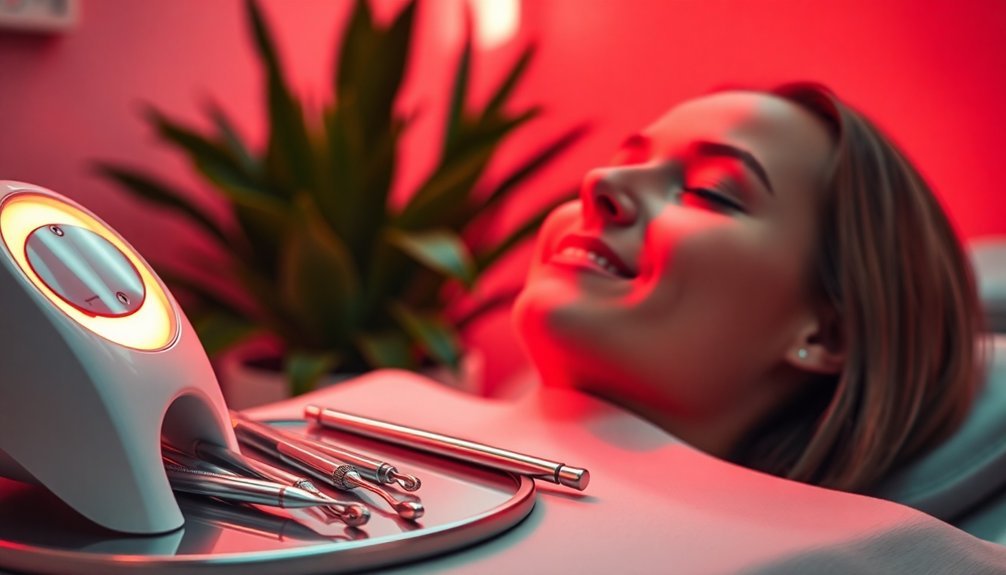
Integrating therapy with your dental care routine can greatly enhance your overall gum health. By combining red light therapy with traditional dental practices, you can achieve faster results and improved outcomes.
Here are three key benefits you'll enjoy:
- Improved Healing: Red light therapy accelerates the healing of oral tissues post-dental procedures, reducing discomfort and downtime.
- Enhanced Tissue Health: Regular sessions promote tissue regeneration, increase circulation, and support the growth of healthy gum tissue, essential for combating gum disease.
- Preventive Care: Incorporating this therapy helps maintain a balanced oral environment, reducing infection risks and complementing your brushing and flossing efforts.
For optimal results, you should aim to use red light therapy a few times a week, ideally for 10-15 minutes each session. This consistent approach can help you achieve long-term benefits and maintain healthier gums.
Consulting your dental professional is critical to tailor the frequency and method to your specific needs, ensuring you maximize the potential of this integrated care technique.
Devices for Red Light Therapy
When it comes to red light therapy for gum disease, you'll find a variety of effective devices suited for at-home use.
From specialized toothbrushes to handheld units and custom mouthguards, these options make treatment convenient and accessible.
Choosing the right device can greatly enhance your gum health, so let's explore what's available.
Recommended Treatment Devices
A variety of treatment devices are available for anyone seeking to harness the benefits of red light therapy for gum disease. Here are three highly recommended options:
1. DPL® Oral Care Light Therapy Device
This device uses 30 red, infrared, and blue LEDs to improve gum and teeth health. It's FDA cleared for home use, reducing tooth sensitivity and inflammation while stimulating gum tissue.
2. Lumebox Red Light Therapy Device
Designed specifically for dental care, this device promotes healing and gum regeneration using low-level red light. It's ideal for use after dental procedures, helping to alleviate discomfort and improve overall oral hygiene.
3. Key Features of Red Light Therapy Devices
These devices are non-invasive and painless with no reported side effects. They can safely increase blood circulation and promote cell regeneration in gum tissues.
These options not only enhance your oral health but also complement traditional dental treatments.
At-Home Therapy Options
For anyone looking to enhance their gum health conveniently, at-home therapy options like red light therapy devices can be game-changers. These devices emit specific wavelengths of red and near-infrared light (630–940 nm), targeting gum inflammation and promoting tissue regeneration.
You can choose models designed to fit inside your mouth or ones meant for external use, catering to your comfort. Typically, you'll use these devices for daily sessions lasting 10-20 minutes, ideally 3-5 times a week for ideal results.
One of the best parts? Red light therapy is non-invasive and painless, with no reported side effects, though it's wise to consult with a healthcare provider beforehand.
As you integrate this therapy into your routine, you'll notice reduced inflammation, enhanced circulation, and accelerated healing of gum issues. This method complements your traditional dental care; it won't replace your regular brushing and flossing but serves as a superb adjuvant.
Whether you're recovering from a dental procedure or looking to maintain gum health, monitoring your gum response is key, and don't hesitate to consult your dentist if you experience any discomfort.
Treatment Protocols and Duration
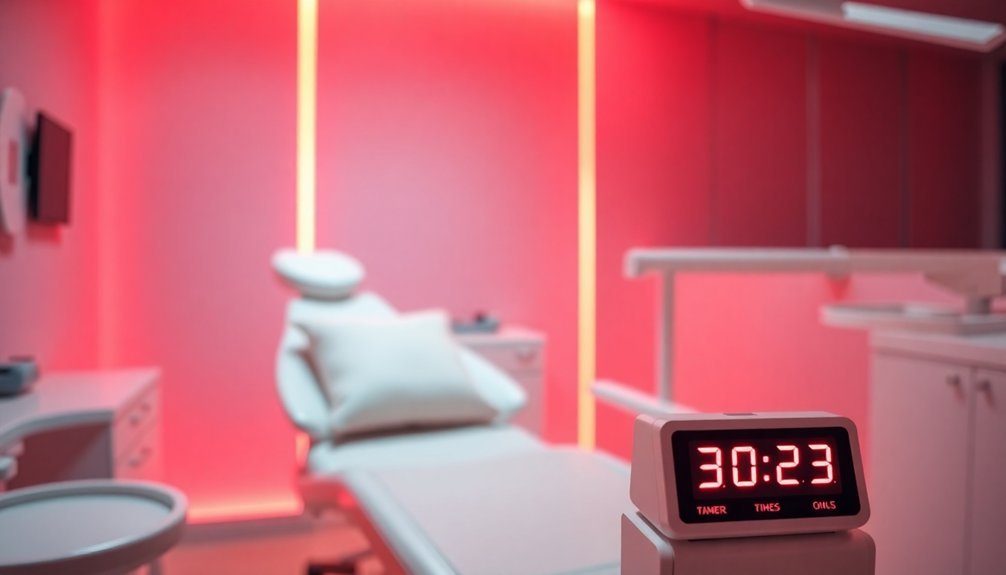
Patients seeking red light therapy for gum disease typically find that treatment involves sessions scheduled 3-5 times a week, each lasting about 10-15 minutes.
The frequency and duration of your sessions can vary based on the severity of your gum issues and overall oral health. Daily usage is sometimes recommended for best results, especially if you're dealing with receding gums.
Here are three important aspects to take into account regarding treatment protocols:
- Consultation: Always consult with a dental professional to determine the best schedule tailored to your needs.
- Application: The therapy applies low-level red or near-infrared light directly to the affected gum areas, promoting circulation and cell regeneration.
- Integration: Red light therapy can work alongside other treatments like scaling and root planing to enhance your overall oral health.
The therapy is non-invasive, comfortable, and can often be performed in clinical settings or at home.
Impact on Gum Disease Progression
Red light therapy's impact on gum disease progression can be significant, offering both immediate relief and long-term benefits. By reducing inflammation and providing pain relief, this therapy helps you manage discomfort and swelling in your gums effectively. It's a non-invasive treatment, meaning you won't have to worry about painful procedures while promoting healing.
Additionally, red light therapy stimulates tissue regeneration, which is essential for repairing damaged gums. It enhances blood circulation, boosts cellular energy, and promotes new tissue growth, working to prevent further gum recession.
Here's a table summarizing the key impacts of red light therapy on gum disease progression:
| Benefits | Description | Outcome |
|---|---|---|
| Reduces Inflammation | Minimizes swelling and discomfort | Improved gum health |
| Promotes Tissue Regeneration | Stimulates cell growth and blood flow | Faster healing and recovery |
| Enhances Periodontal Health | Supports gum tissue stability and bone regeneration | Prevention of severe gum disease |
Regular use of red light therapy can lead to noticeable improvements in your gum health, reducing the risk of severe conditions developing over time.
Enhancing Oral Hygiene Practices
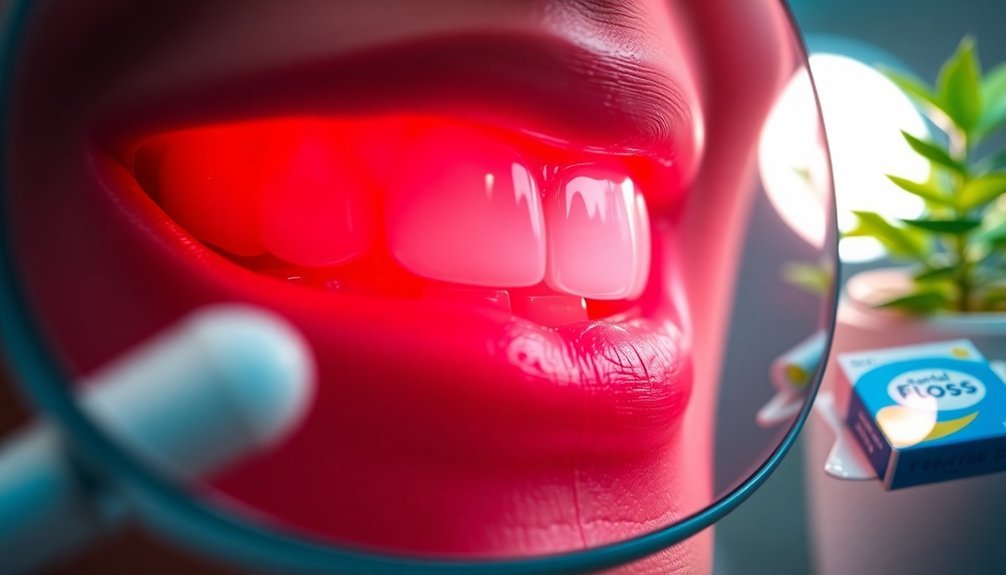
Effective oral hygiene practices are essential for maintaining healthy gums and preventing gum disease. By taking these steps, you'll greatly enhance your oral health and reduce the risk of complications. Here are three key tips to keep in mind:
- Brush and Floss Daily: Brush your teeth at least twice a day using fluoride toothpaste, and don't forget to floss daily. Flossing removes plaque and debris that a toothbrush can't reach, aiding in gum health.
- Rinse with Antibacterial Mouthwash: Incorporate an antibacterial mouthwash into your routine. This will help reduce bacteria in your mouth, further preventing plaque buildup and keeping your gums healthy.
- Visit Your Dentist Regularly: Make dental checkups a priority—aim for visits twice a year. Regular cleanings and professional advice are vital for identifying and addressing potential issues before they escalate.
Additionally, rinsing your mouth with water after meals and limiting sugary foods will work wonders.
Patient Experience and Comfort
When you experience red light therapy, you'll find it pain-free and comfortable, making your treatment sessions a breeze.
Plus, the option to do some treatments at home allows you to fit care into your busy schedule easily.
Embracing this therapy means reducing discomfort while enhancing your oral health effortlessly.
Pain-Free Treatment Experience
Many patients find red light therapy to be a surprisingly relaxing experience in managing gum disease. This treatment stands out for its non-invasive nature, which eliminates the need for surgical procedures and reduces anxiety.
Here's why you'll appreciate the pain-free treatment experience:
- Painless Sessions: You won't feel pain during or after the sessions, as red light therapy is designed to alleviate discomfort associated with gum disease and enhance overall comfort.
- Quick and Efficient: Sessions usually last just 10-15 minutes, allowing you to fit them easily into your schedule while effectively promoting gum health.
- Minimal Side Effects: Most patients experience very few side effects, typically just minor redness or sensitivity that fades quickly, ensuring a safe and comfortable treatment.
As a result, many find that red light therapy not only helps reduce inflammation but also improves circulation in the gums.
This therapy enhances your oral health without contributing to discomfort or anxiety. Overall, you can enjoy a peaceful, effective way to support your journey in reversing gum disease.
Convenient At-Home Options
Integrating red light therapy into your daily routine is easier than ever with convenient at-home devices tailored for gum health. Devices like red light masks and mouthpieces emit the right wavelengths that penetrate deeply into your gum tissue, making them effective tools for home treatment. You can hold the light close to your gums for about 10-20 minutes per session, three to five times a week, depending on your oral health needs.
Using these devices is straightforward. Just select the right device and follow the included instructions to verify you're emitting the correct wavelengths. Consistency is key, so regular use will yield the best results.
Remember, red light therapy isn't a substitute for brushing and flossing; it enhances your daily hygiene routine and supports a healthier bacterial balance in your mouth.
Not only are these at-home treatments cost-effective compared to frequent clinic visits, but they also offer unparalleled convenience. Investing in devices like Lumebox can provide a one-time solution that fits seamlessly into your life, allowing you to maintain superior gum health from the comfort of your home.
Research and Clinical Evidence
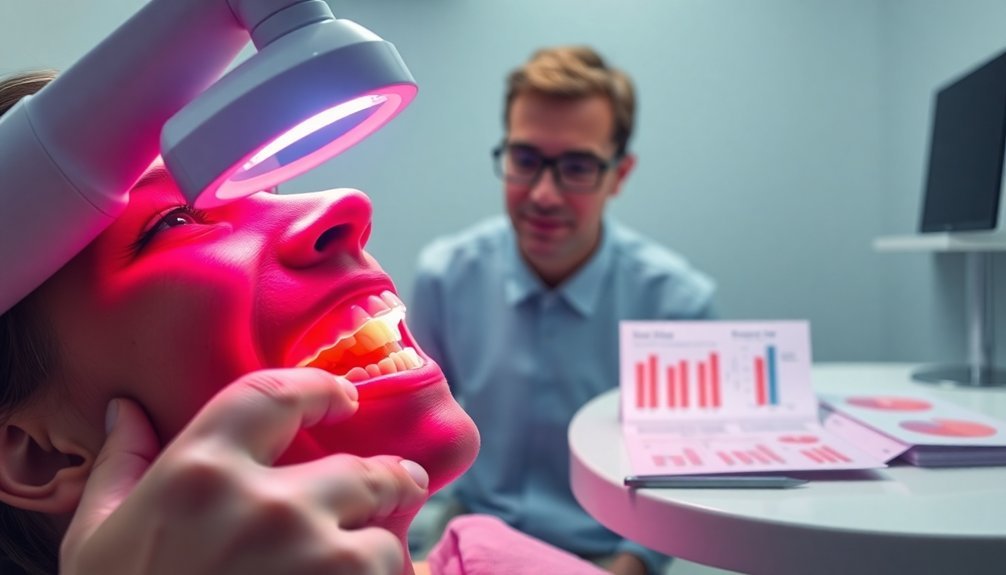
Research into red light therapy (RLT) for gum disease reveals compelling clinical evidence supporting its effectiveness. Numerous studies demonstrate that integrating RLT with conventional treatments leads to significant improvements in gum health.
Here are three key findings:
- Improved Outcomes: RLT enhances clinical outcomes when paired with scaling and root planing, particularly in severe periodontitis cases.
- Reduction in Inflammation: Research shows RLT reduces gum inflammation, tenderness, and swelling, resulting in healthier gums.
- Enhanced Tissue Regeneration: Clinical trials indicate that RLT promotes tissue regeneration and improves blood circulation in the gums.
Future Perspectives in Oral Health
Red light therapy is just one example of how emerging technologies are reshaping oral health. The future of oral care looks promising, with advancements that enhance diagnostics, treatment, and patient engagement. As you explore these innovations, you'll find a focus on prevention, health equity, and accessibility.
| Innovation | Impact on Oral Health |
|---|---|
| Digital Dentistry & 3D Printing | Enhances precision, reduces treatment times |
| Smart Toothbrushes | Monitors oral health, providing real-time data |
| AI & Machine Learning | Assists in disease diagnosis and treatment planning |
| Tele-dentistry | Increases access for remote patients |
| Cloud-based Records | Facilitates data sharing and remote patient monitoring |
These breakthroughs enable better care while promoting a holistic approach to oral wellness. You'll notice an emphasis on interdisciplinary collaboration, encouraging stronger ties between dental and overall health. Furthermore, lifestyle education is crucial, empowering you to make informed choices about your oral health. With these advancements, oral care isn't just about treatment—it's about creating a healthier future for everyone.
Frequently Asked Questions
Can Red Light Therapy Be Used for Sensitive Teeth?
Yes, you can use red light therapy for sensitive teeth. It helps regenerate the dentin layer, reduces inflammation, and eliminates harmful bacteria, providing relief from sensitivity and promoting overall oral health without invasive procedures.
Is Red Light Therapy Suitable for All Ages?
Yes, red light therapy's suitable for all ages. It's non-invasive, comfortable, and safe for everyone, including children and adults. Just consult a healthcare provider to verify it fits your individual needs and circumstances.
How Long Until I See Results From Red Light Therapy?
You'll likely notice results within a few weeks of consistently using red light therapy. Reduced inflammation and improved gum health might start showing up quickly, especially with regular treatment sessions tailored to your needs.
Can I Use Red Light Therapy if I Have Braces?
Yes, you can use red light therapy if you have braces. It reduces inflammation, speeds up tooth movement, and promotes gum health, making it a beneficial addition to your orthodontic treatment without any discomfort.
Will Insurance Cover Red Light Therapy Treatments?
Your insurance coverage for red light therapy treatments varies. You'll need to check with your provider to see if it's included in your plan, as some require documentation and others might require out-of-pocket payments.
In Summary
Incorporating red light therapy into your oral care routine could be a game changer for reversing gum disease. Its mechanisms target inflammation, promoting healing while complementing traditional dental treatments. With its proven safety and effectiveness, you can enhance your gum health while still following your dentist's advice. Embracing this innovative approach not only boosts your oral hygiene practices but also gives you a more comfortable and positive patient experience. So, why not give red light therapy a try?
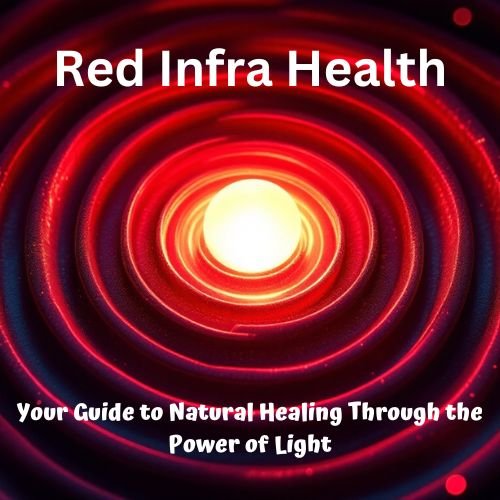
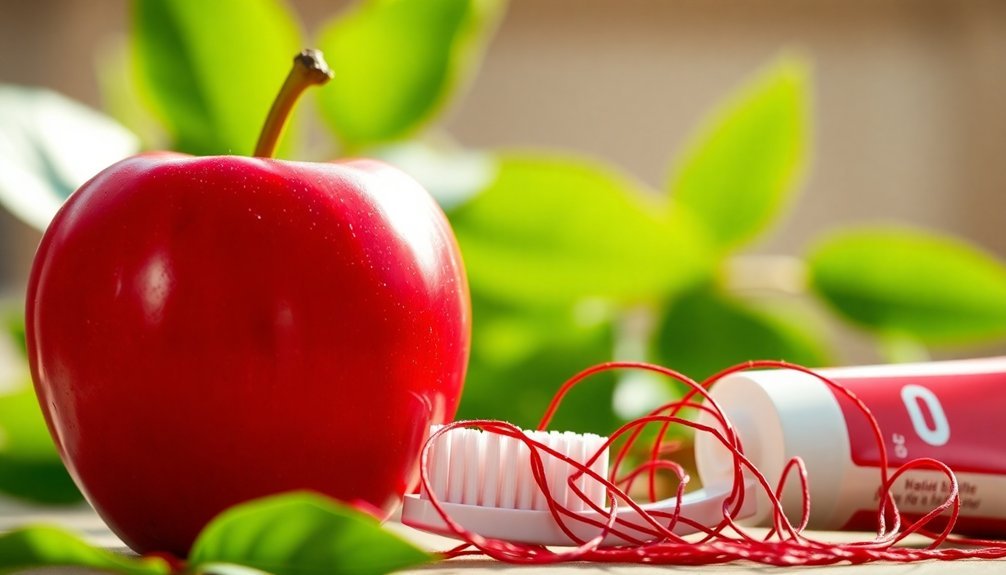

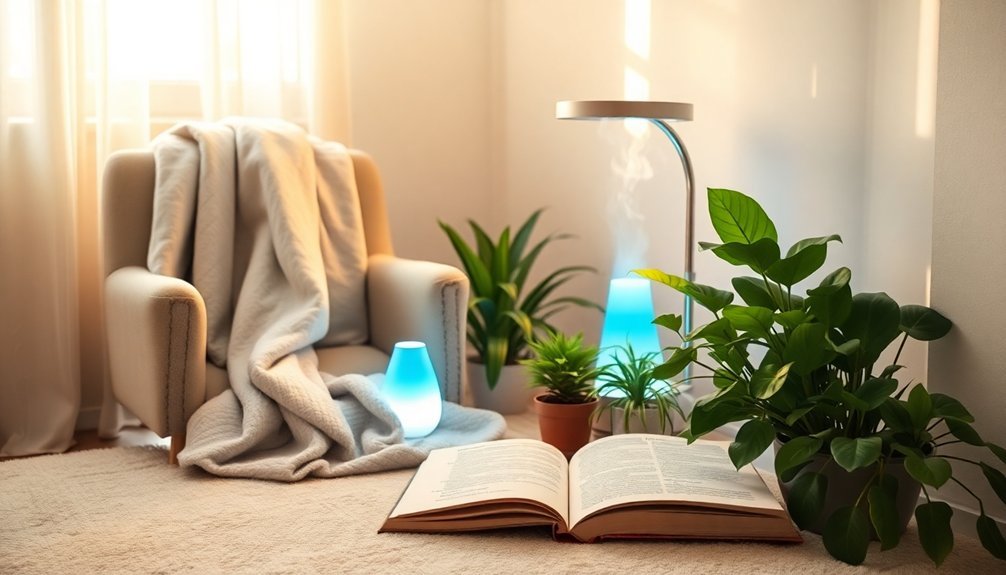
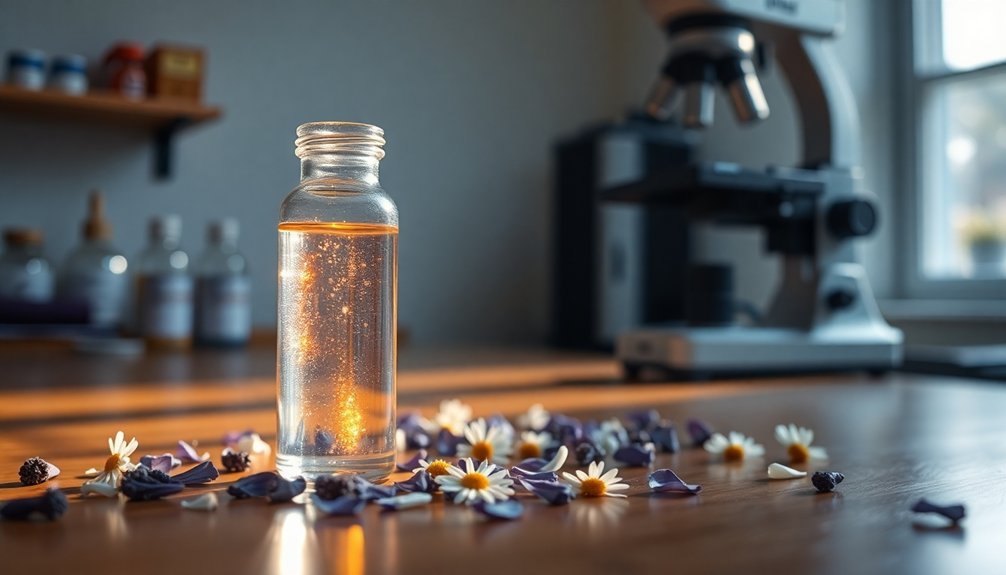
Leave a Reply